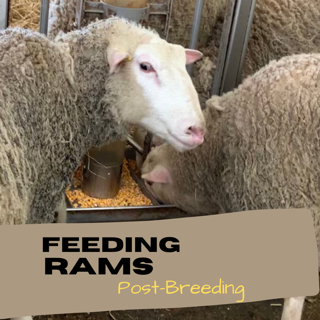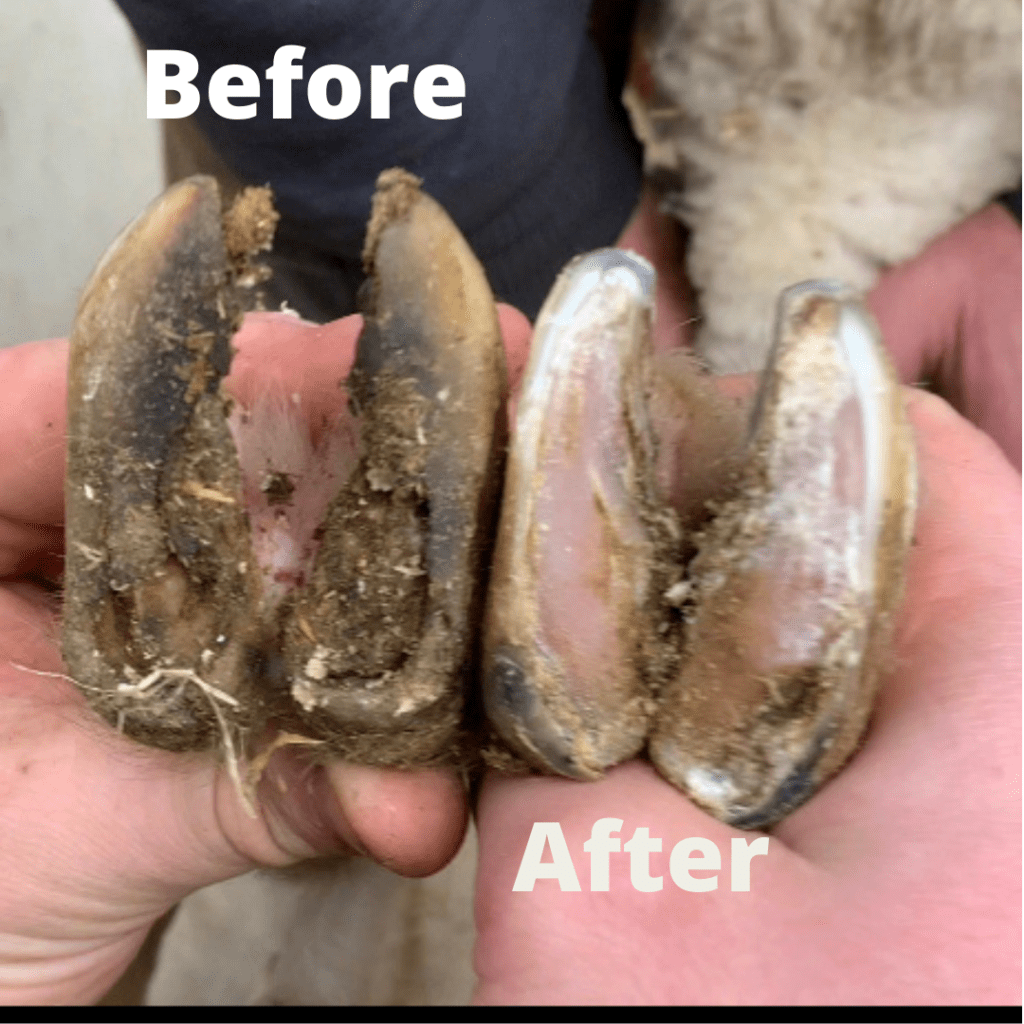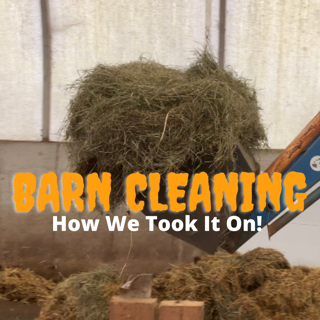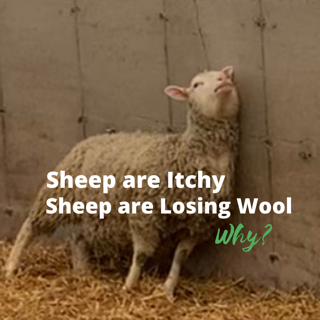How to feed rams successfully post-breeding starts with knowing their body condition score and what’s in the feed.
What to feed rams will be slightly different for every sheep operation. No two farms have exactly the same set-up. By working with our nutritionist; we develop the knowledge of what we feed our rams. This knowledge is further enhanced by connecting the hay analysis with the rams body condition scoring. This allows for the creation of a suitable feed plan for our rams.
Rams should be fed to maintain a body condition score of 2.5 to 3.0 (scale 1-5) for most of the year, with 3.0 -3.5 as the target for breeding season. To ensure they are in the target range, score your rams monthly.
Feed rams to meet their nutritional requirements as the seasons change. Rams that are exposed to cold winter temperatures need extra energy in their daily ration to compensate for heat loss. During the heat of summer; rams should have some form of shade and full access to good quality water. [3]
Ram lambs require a higher level of nutrition than mature rams. And therefore should be housed separately. [3]
Good quality hay usually provides sufficient protein and energy to get the job done. Supplement with grain if poor quality roughage or straw makes up more than one third of the total ration. Rations should be balanced to ensure that vitamin, mineral and trace mineral requirements are met. [1]
Poor nutrition can result in lower fertility and loss of vigor and aggressiveness. [2]
Feeding Ram Lambs
Ram lambs need higher levels of energy and protein in order to reach their potential mature weight and size.
Don’t forget that rams need salt and minerals too. Clean fresh water is critical for ram health. [1]
Ram Feeding Cycles
- Maintenance
- Pre-Breeding
- Breeding
- Post Breeding
RAM NUTRITION
The ram also requires adequate nutrition to optimize productivity. Poor nutrition may result in poor fertility and reduced vigor. During most of the year; the nutrients necessary to keep the ram in moderate condition will come from harvested forage.
Rams are to be flushed similarly to the ewes in preparation for the breeding season. Additionally; supplementation should continue for a month into the season.
The ram should also be prevented from getting fat. An over conditioned ram will be less efficient reproductively. [4]
Pre-Breeding
Pre-breeding rams begins 6 weeks before breeding. At this time, evaluate the rams body condition. Each rams should have a body condition score of 3 to 3.5 before the beginning of the breeding season.
Rams spend very little time eating once turned in with the ewes for breeding. This can result in them losing weight during a breeding period.
Poor nutrition is a major cause of ram mortality.
How to Feed Rams Successfully When Flushing
In many cases, forage alone is not adequate nutrition for placing rams in proper body condition for the breeding season. Six weeks before breeding, rams should be evaluated for body condition. Thin rams should receive grain supplementation as a means to increase body weight and condition. It takes 50 days and approximately 2.5 pounds of corn per day in addition to a ram’s normal diet to move him from a weight of 225 pounds to 250 pounds.
How to Feed Rams Successfully Post-Breeding
Maintain mature rams, not in breedingby feeding a good quality hay. Six to eight pounds of mixed grass and clover hay is sufficient to meet the daily energy requirements of a 250 pound ram. A free choice source of water, salt, and minerals should be available at all times. [5]
Visit Our Farm and View the Approach We Take on Feeding Our Rams
Over Feeding Rams Can Cause Problems
We aim to avoid over feeding our rams. Condition scores greater than 3.5 are excessive for rams. The adverse affects of excessive fatness include:
- Reduced fertility from overheating of the testicles;
- Poor mating performance – lack of aerobic fitness and mating dexterity, especially a concern when breeding ewe lambs or small ewes;
- Lameness – due to cartilage damage during rapid growth or laminitis (founder);
- Increased susceptibility to heat stress;
- Unnecessary feed costs [1]
Sources:
- [1] https://www.ablamb.ca/images/documents/factsheets/BBL4-Managing-Rams-Screen.pdf
- [2] https://catalog.extension.oregonstate.edu/sites/catalog/files/project/pdf/em8916.pdf
- [3] https://www.ablamb.ca/images/documents/factsheets/BBL4-Managing-Rams-Screen.pdf
- [4] http://content.libraries.wsu.edu/utils/getfile/collection/cahnrs-arch/id/501/filename/9658182432004_eb1675.pdf
- [5] https://www.pubs.ext.vt.edu/410/410-853/410-853.html





